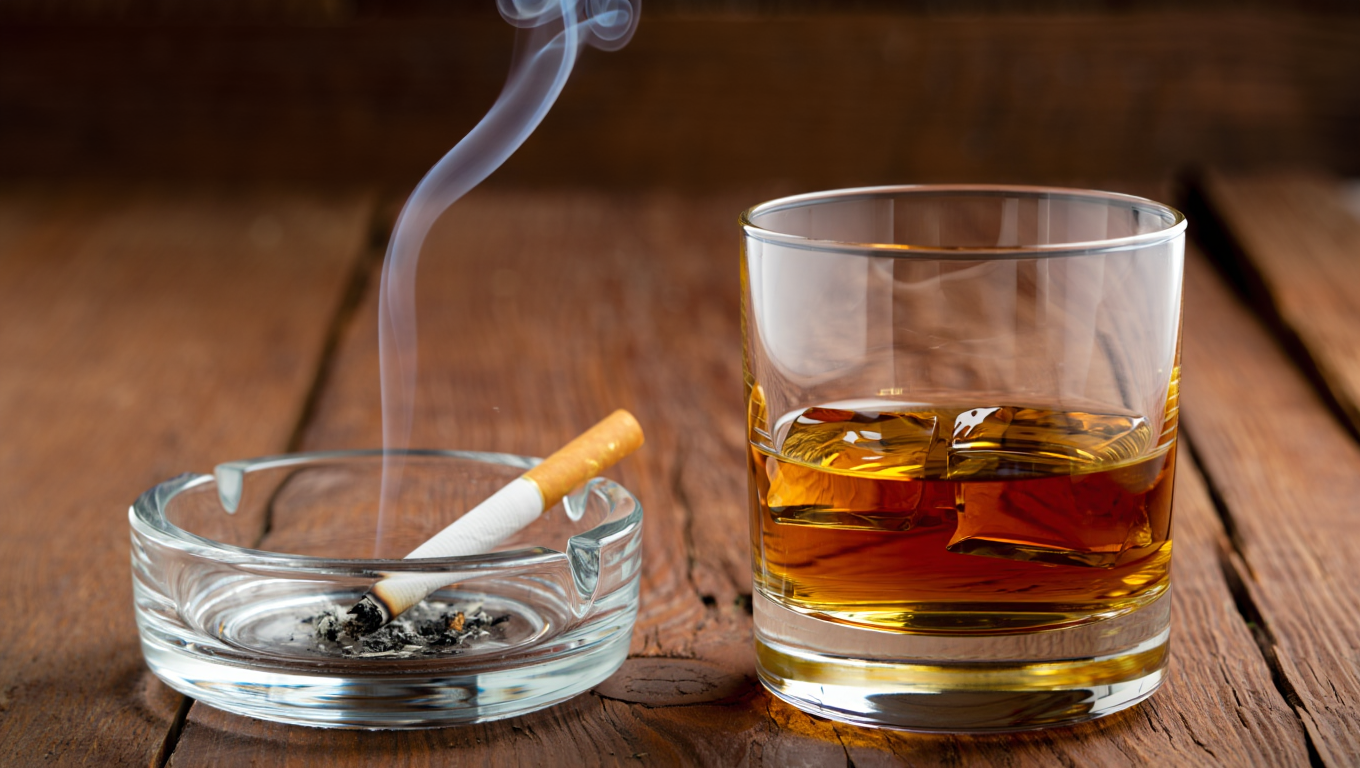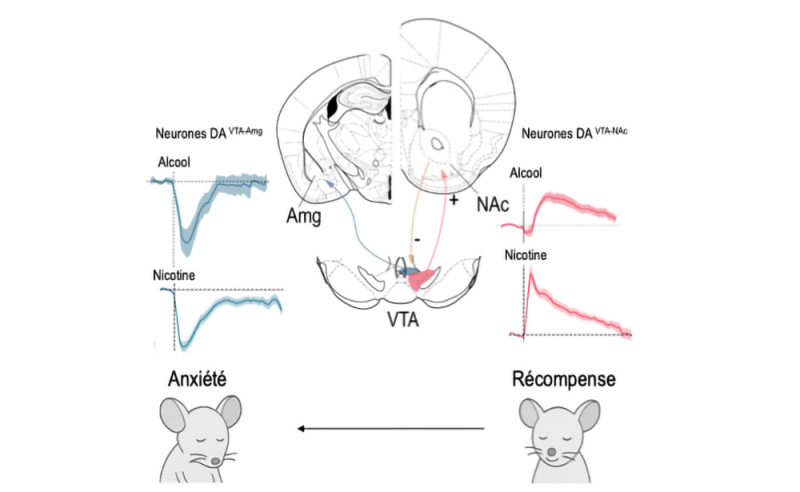Follow us on Google News (click on ☆)
In an article published in the journal Nature Communications, scientists highlight a surprising mechanism that helps explain this paradox. By studying the effects of nicotine and alcohol on the mouse brain, they identified a brain circuit that directly links reinforcement and emotional discomfort.

A mechanism linking reinforcement and anxiety
Previous work had already shown that nicotine specifically inhibits a subpopulation of dopamine neurons in a brain region called the ventral tegmental area (VTA), known to play a central role in the reward circuit. These neurons, which project to the amygdala—a region involved in emotion regulation—are associated with anxiety. However, the mechanism of their inhibition remained poorly understood.
In this study published in Nature Communications, scientists show that this inhibition results from a cascade effect. When another group of dopaminergic neurons in the VTA, which project to the nucleus accumbens (NAc)—a key region of the reward circuit—is activated by nicotine or alcohol, it triggers a feedback loop that inhibits the VTA neurons projecting to the amygdala and modulating anxiety.
Result: the same substance can reinforce consumption behavior while disrupting the emotional circuits that normally regulate anxiety.
A circuit shared by alcohol and nicotine
The scientists also demonstrated that alcohol engages the same circuit as nicotine and that their effects are additive. Using optogenetics, a cutting-edge technique that allows neurons to be activated or inhibited with light, they were able to specifically block this feedback loop. This prevents both neuronal inhibition and the emergence of anxious behavior typically observed after drug administration.
This discovery highlights a little-known aspect of brain function: the same networks that encode reward can, under certain conditions, generate negative emotional states. By directly linking these two dimensions, the identified circuit sheds light on the mechanisms of addiction, particularly the frequent co-use of tobacco and alcohol. Beyond these fundamental results, this work opens new perspectives for better understanding how the brain articulates consumption behavior and emotional regulation, and how this dynamic can become pathological in the context of repeated drug use.

Nicotine and alcohol activate an inhibitory feedback loop between dopaminergic reward and anxiety circuits.
Nicotine and alcohol increase the activity of dopaminergic neurons projecting to the nucleus accumbens (DAVTA-NAc, in red), responsible for the reward effect. This activation triggers a GABAergic return to the VTA, inhibiting the activity of dopaminergic neurons targeting the amygdala (DAVTA-Amg, in blue), which induces anxiety.
DA: dopamine; VTA: ventral tegmental area; NAc: nucleus accumbens; Amg: amygdala.
© Fabio Marti